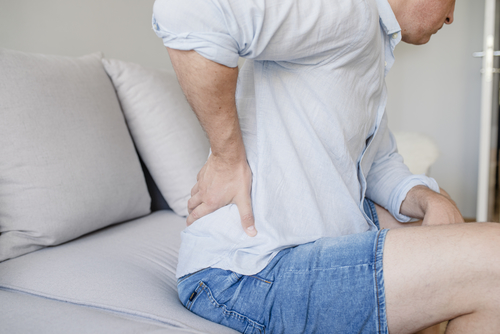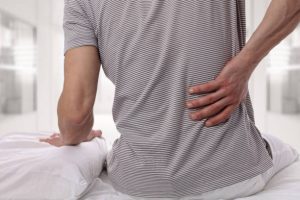Sciatica is about the pain that radiates along the path of the sciatic nerve, which
branches from the lower back through the hips, buttocks and down both legs. Typically,
sciatica affects only one side of the body.
Sciatica commonly occurs when the herniated disk, bone spur on the spine or narrowing
of the spine (spinal stenosis) compresses the part of your nerve. Thus causes inflammation, pain and constant numbness in the affected leg. Though the pain connected with sciatica back pain can be severe, most cases can be cured with non-operative treatments in a couple of weeks. Individuals who have acute sciatica that’s associated with significant leg weakness or bowel or bladder inconsistencies might be a target for surgery.

Symptoms
Pain that radiates from your lower (lumbar) spine all the way to your buttocks and down
the back of your leg is the hallmark of sciatica. You will feel discomfort almost anywhere
along your nerve pathway, but it’s especially likely to follow a path from the low back to
your buttocks and around the back of your thigh & calf.
The pain varies, from mild pain to a sharp, burning feeling or excruciating pain. mostly
it can feel like a jolt or electric shock. It feels worse when you cough or sneeze, and
prolonged sitting can initiate symptoms. normally only one side of the body is affected.
Some people also have numbness, tingling or muscular weakness in the affected leg or
foot. You might feel pain in one part of your leg and numbness in another.
When to consult a doctor for sciatica back pain
Mild sciatica usually fades away over time. Consult your doctor if self-care measures did
not work to ease your symptoms or if your pain is longer than a week, became severe or
progressively gotten worse. Get immediate medical attention if:
• You have sudden, unbearable pain in your low back or leg and numbness or
muscle weakness in your leg
• The pain follows a violent injury, for example, a traffic accident.
• Have trouble controlling your bowels or bladder
• Request an Appointment at Mayo Clinic
• Causes
• Herniated spinal disk
• Herniated disk
• Bone spurs and narrowed disks in the spine
• Bone spurs on the spine
Sciatica occurs when the sciatic nerve was pinched, usually by a herniated disk in your
spine or by an overgrowth of bone (bone spur) on your vertebrae. On most cases, the
nerve can be compressed by a tumor or damaged by illness such as diabetes.
Risk factors
Risk factors for sciatica consist of:
Age. Age-related changes in the spine, such as herniated disks and bone spurs, are the most common causes of sciatica.
Obesity. Maximizing the stress on your spine, excess body weight can endow to the
spinal changes that trigger sciatica.
Occupation. A job that forces you to twist your back, Lift heavy loads or drive a vehicle
for long periods of time might play a role in sciatica, but there’s no relating evidence of
this link.
Prolonged sitting. People who sit for prolonged periods or have a sedentary lifestyle are
more likely to have sciatica than nosy active people are.
Diabetes. This condition, which affects the way your body uses blood sugar, becomes
greater the risk of nerve damage.

Complications
Although a lot of people recover completely from sciatica, sometimes without
treatment, sciatica back pain can potentially cause irreversible nerve damage. Seek immediate
medical help if you have:
• Loss of feeling in the affected leg
• Weakness that focus the affected leg
• Loss of bowel or bladder function
Prevention
It’s not always possible to prevent sciatica, and conditions may recur. The following can
play a vital role in protecting your back:
Exercise Daily. To keep your back strong, pay special focus to your core muscles — the
muscles in your core and lower back that are needed for proper posture and alignment.
Ask your doctor to recommend specific tasks.
Practice proper posture when you sit. Choose a seat with good lower back support,
armrests and a swivel base. Make it a habit of placing a pillow or rolled towel on the
base of your back to maintain its natural curve. Mind your knees and hips at level.
Use good body mechanics. If you stand for long periods of time, rest one leg on a stool
or small box in interval. When you lift something heavy, let your lower core do the work.
Move straight up and down. Keep your back straight and curve only at the knees. Keep
the load close to your body. Avoid lifting and twisting at the same time. Look fo a lifting
partner if the object is heavy or awkward.
I have been a family dentist in Phoenix, Arizona for over two decades. Arizona is my home, and I would never want to leave here for the world. I’m happily married to the dazzling Karen with two bustling boys.
I love the Bee Gees, so I just had to pick up this domain! On this blog, I will be offering the best of my wisdom to you about dentistry and the benefits of quality family dental care.
